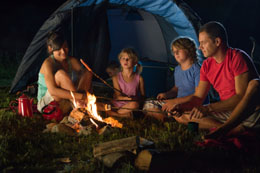cut block in high school football
Question
QUESTION: Is the cut block allowed in high school football (in California)? My son plays middle linebacker, was set up as a linebacker on a particular play and was speared on his kneecap by the center when he rushed in. The hit was hard enough to push his knee backwards.
ANSWER: Daryl,
I need to know some more information about the play you describe before I can give you an answer, as your question contains terms of art ["cut block, speared"] that have specific definitions. First spearing is always illegal. The layman definition of Spear is the using of the helmet by a player who launches himself helmet first into an opponent making contact only with the helmet. The term cut block is a low block and generally is legal if done on the initial charge in the free blocking zone. However you use the term "set up" which makes me wonder if you may be describing a "Chop Block". Chop blocks are illegal. Chop blocks are a high low or low high block by 2 or more non adjacent linemen with a delay.
If you are describing a play in which the LB rushes in to and through the line of scrimmage and a center in the free blocking zone blocks the linebacker low at the knees and there is no other offensive lineman involved in the block that sound like a legal play.
Please know the phrase cut block is a term of art describing a low block. There are no specific penalties for a "cut block" but if the block was some other type of illegal low block that would be a foul (i.e. chop block, clip, illegal block below the waist) also if there truly was a "spearing" that would have been a foul.
Victor Winnek
NCAA Football Official
---------- FOLLOW-UP ----------
QUESTION: Thanks Victor,
The defense was in a 3-5 formation (5 linebackers), my son was middle and was to blitz at the snap...which he did. The center lunged at him after the snap using only his helmet to make contact. No other offensive lineman were involved. Since the hit was intentionally at the knee level I called it a cut block. My son never broke the line of scrimmage because that was the point where the center started his lunge.
Answer
FOLLOW-UP ANSWER:
The term "Cut Block" is not a block as defined in rule 2 OF THE NATIONAL FEDERATION OF HIGH SCHOOLS FOOTBALL RULES, but it refers to a block below the waist. In the high school game Blocking Below the Waist is Not allowed outside the free-blocking zone. Within the zone it is permitted by linemen of either team may only block opposing linemen. per rule 2-3-7 & 2-17-2. The Free Blocking zone is defined by a zone that is 3 yards on each side of the ball and 4 yards wide on each side of the line. Only players who are on the line and in the zone may block below the waist. Only offensive players who are on the line and in the zone may block in the back or clip. The zone exists only while ball is in the zone. THE CENTER IS IN THE FREE BLOCKING ZONE AND PRESUMBABLY A MIDDLE LINEBACKER IS TOO. THUS SUCH A BLOCK BELOW THE WAIST WOULD BE LEGAL. THE TROUBLING PART OF YOUR DESCRIPTION IS YOU USE THE PHRASE "SPEAR".
Illegal Helmet Contact ?Rules 2-20, 9-4-3i and 9-4-3i note
deal with 3 (three) types of illegal helmet contact Rule 2-20: Illegal helmet contact is an act of initiating contact with the helmet against an opponent. There are several types of illegal helmet contact:
a. Butt Blocking is an act by an offensive or defensive player who initiates contact against an opponent who is not a ball carrier with the front of his helmet.
b. Face Tackling is an act by a defensive player who initiates contact with a ball carrier with the front of his
helmet.
c. Spearing is an act by an offensive or defensive player who initiates contact against any opponent with the
top of his helmet.
Rule 9-4-3i: Initiate illegal helmet contact. (butt block, face tackle or spear) NOTE: Illegal helmet contact may be considered a flagrant act. Acts to be considered flagrant include, but are
not limited to:
1. Illegal helmet contact against an opponent lying on the ground,
2. Illegal helmet contact against an opponent being held up by other players, and/or
3. Illegal helmet-to-helmet contact against a defenseless opponent.
The Reason for this Change was in addition to the emphasis on safety concerns, these revisions give examples of some types of illegal helmet contact that may result in disqualification.
i think im not built for football
My Size


